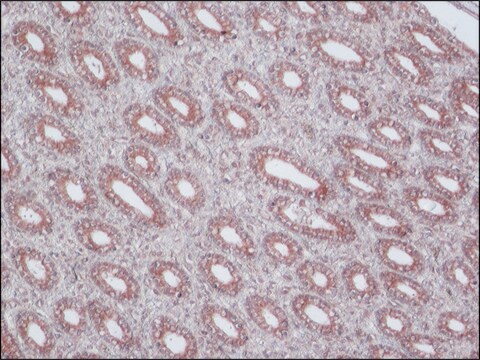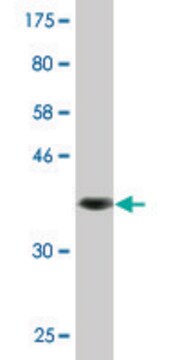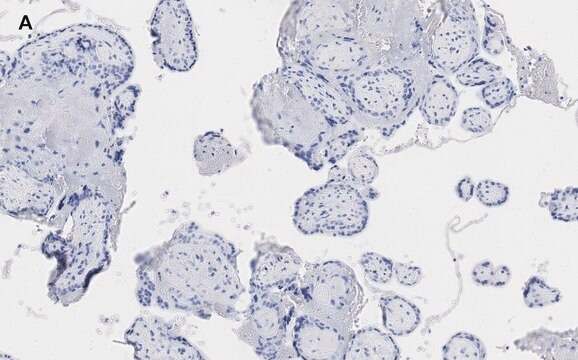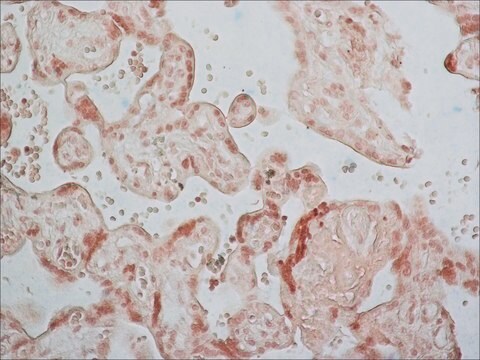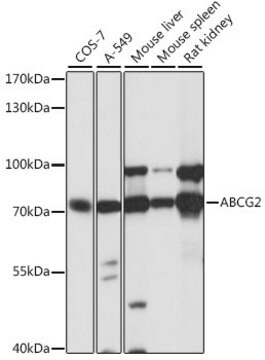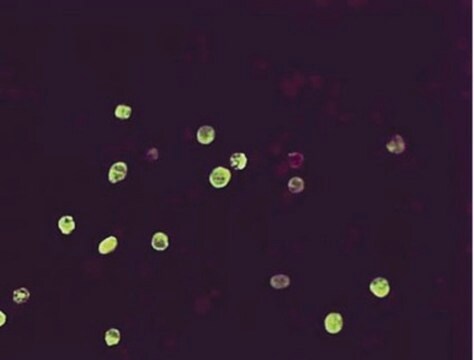MAB4145
Anti-BCRP Antibody, clone BXP-34
culture supernatant, clone BXP-34, Chemicon®
Synonim(y):
Breast Cancer Resistance Protein, Placenta-specific ATP Binding Cassette Transporter, ATP-binding Cassette, Sub Family G, member 2 (ABCG2)
About This Item
Polecane produkty
pochodzenie biologiczne
mouse
Poziom jakości
forma przeciwciała
culture supernatant
rodzaj przeciwciała
primary antibodies
klon
BXP-34, monoclonal
reaktywność gatunkowa
human
producent / nazwa handlowa
Chemicon®
metody
immunocytochemistry: suitable
immunohistochemistry: suitable
moc wejściowa
sample type hematopoietic stem cell(s)
sample type neural stem cell(s)
izotyp
IgG1
przydatność
not suitable for Western blot
not suitable for immunohistochemistry (Paraffin)
numer dostępu NCBI
numer dostępu UniProt
Warunki transportu
wet ice
docelowa modyfikacja potranslacyjna
unmodified
informacje o genach
human ... ABCG2(9429)
Opis ogólny
Specyficzność
Immunogen
Zastosowanie
Immunohistochemistry: 1:20 on acetone fixed frozen tissue sections
Not suitable for paraffin-embedded tissues or for Western blotting
Optimal working dilutions must be determined by end user.
Stem Cell Research
Hematopoietic Stem Cells
Opis wartości docelowych
Postać fizyczna
Przechowywanie i stabilność
Komentarz do analizy
MCF-7 cells
Inne uwagi
Informacje prawne
Oświadczenie o zrzeczeniu się odpowiedzialności
Nie możesz znaleźć właściwego produktu?
Wypróbuj nasz Narzędzie selektora produktów.
polecane
Kod klasy składowania
10 - Combustible liquids
Klasa zagrożenia wodnego (WGK)
WGK 1
Certyfikaty analizy (CoA)
Poszukaj Certyfikaty analizy (CoA), wpisując numer partii/serii produktów. Numery serii i partii można znaleźć na etykiecie produktu po słowach „seria” lub „partia”.
Masz już ten produkt?
Dokumenty związane z niedawno zakupionymi produktami zostały zamieszczone w Bibliotece dokumentów.
Nasz zespół naukowców ma doświadczenie we wszystkich obszarach badań, w tym w naukach przyrodniczych, materiałoznawstwie, syntezie chemicznej, chromatografii, analityce i wielu innych dziedzinach.
Skontaktuj się z zespołem ds. pomocy technicznej